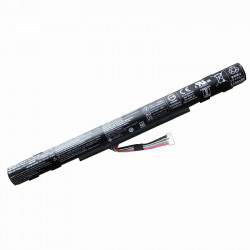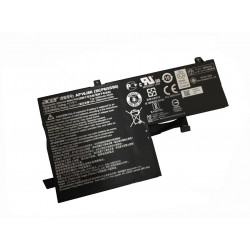
In our digital age, few components have been as impactful and omnipresent as lithium batteries. They power our smartphones, laptops, cameras, and even emerging technologies like electric vehicles. However, as their use has proliferated, so have concerns about their safety, particularly when damaged or improperly handled. Over the years, stories of exploding batteries and subsequent bans from airlines have brought the topic to the forefront of consumer safety discussions.
Understanding the safety dynamics of lithium batteries is essential, not just for those in the tech and shipping industries, but also for everyday users. After all, mishandling can lead to catastrophic outcomes, emphasizing the importance of being well-informed. This article dives deep into the world of lithium batteries, exploring their nature, inherent safety concerns, best practices for handling, and shipping regulations. Drawing from a wealth of research and expert insights, we'll provide a comprehensive guide tailored to both professionals and average users.
Understanding Lithium Batteries
What are Lithium Batteries?
At their core, lithium batteries are electrochemical cells that generate power through reactions involving lithium, a highly reactive alkali metal. The allure of lithium lies in its ability to store high energy densities, making it a preferred choice for portable devices. Its high voltage, long cycle life, and lightweight nature further cement its place as a mainstay in modern electronic devices.
Types of Lithium Batteries
Lithium batteries aren't monolithic. In fact, there are multiple types, each with its own chemical composition and use-cases.
- Lithium-ion (Li-ion): Common in consumer electronics, these batteries are rechargeable, offering high energy density and minimal memory effect.
- Lithium-polymer (LiPo): Unlike their ion counterparts, these batteries use a polymer electrolyte instead of a liquid one. They're often found in drones and other applications where shape flexibility is key.
- Lithium Iron Phosphate (LiFePO4): Recognized for their safety features, these batteries are used in large applications like electric vehicles.
- Lithium Primary: These are non-rechargeable batteries used in applications where long shelf life and stability are crucial, like in medical devices and safety equipment.
Safety Concerns and Why They Matter
Historical Incidents Involving Lithium Batteries
Safety isn't just a theoretical concern. Over the years, we've seen multiple incidents that underscore the need for caution. For instance, in 2016, the Samsung Galaxy Note 7 made headlines after multiple reports of the phone catching fire due to battery issues. Similarly, there have been instances of e-cigarettes exploding, and even hoverboard fires, all linked to battery malfunctions.
These incidents are not mere accidents but highlight a crucial aspect of lithium battery chemistry. When punctured, overcharged, or subjected to extreme temperatures, they can undergo a process called "thermal runaway," leading to fires or explosions.
The Chemistry Behind the Concern
What makes lithium batteries so volatile? The answer lies in their chemistry. Lithium, by nature, is highly reactive, especially when exposed to moisture. Inside the battery, separated by a thin separator, are the cathode and anode. Should this separator fail, it can cause a short circuit, rapidly generating heat. If the heat can't dissipate quickly enough, it can ignite the flammable electrolytes, leading to thermal runaway.
Given their high energy density, the resultant fires can be particularly fierce, making them challenging to extinguish.
Proper Handling and Storage of Lithium Batteries
Safe Storage Guidelines
For many, lithium batteries are a part of daily life. As such, understanding their safe storage is paramount.
- Temperature: Store batteries in a cool, dry place, away from direct sunlight. Extreme temperatures, especially heat, can degrade the battery's life and pose safety risks.
- Protective Cases: If storing batteries outside of the device, use protective cases to prevent short circuits, especially for loose or spare batteries.
- Away from Metal: Metal objects can cause short circuits if they come into contact with battery terminals. Ensure that batteries are kept away from coins, keys, and other metallic items.
- Original Packaging: If possible, keep unused batteries in their original packaging to avoid any accidental activation or pressure.
Charging and Discharging Recommendations
Using batteries safely extends to their charging and discharging processes.
- Use Manufacturer-Provided Chargers: Always use the charger provided by the manufacturer or ensure that the replacement is of equivalent quality and specification.
- Monitor Charging: While many modern devices have safety mechanisms in place, it's still a good practice to avoid leaving batteries to charge unattended for extended periods.
- Avoid Over-Discharge: Repeatedly draining a lithium battery to a very low state can harm its lifespan and safety. It's recommended to recharge before it's entirely drained.
Shipping Lithium Batteries: Regulations and Best Practices
International Shipping Regulations
The shipment of lithium batteries is heavily regulated due to the associated risks. Various international bodies, like the International Air Transport Association (IATA), have set guidelines for their safe transportation.
- Packaging: Batteries must be packed in strong outer packaging that can withstand drops and pressure changes.
- Labeling: Packages containing lithium batteries should be clearly labeled, indicating the nature and quantity of the batteries inside.
- Quantity Restrictions: There are limits on the number of batteries one can ship, especially by air.
Packaging and Labeling for Safety
Ensuring that lithium batteries are appropriately packaged and labeled is crucial for the safety of all involved in the shipping process.
- Isolate Terminals: When shipping loose batteries, ensure that the terminals are isolated to prevent short-circuiting. This can be done using non-conductive tape or individual bags.
- Cushioning: Batteries should be cushioned within their packaging to prevent movement and potential damage during transit.
- Warning Labels: Clearly indicate that the package contains lithium batteries, with symbols and text warnings as prescribed by regulatory bodies.
Understanding and adhering to these guidelines is not just about compliance; it's a responsibility that shippers have towards ensuring the safety of handlers, transporters, and recipients.
A Look into the Future: Innovations in Battery Safety
As technology advances, the quest for safer and more efficient lithium batteries continues. Researchers and engineers are consistently working on innovations to address the current safety concerns.
Solid-State Batteries
One of the most promising developments in the lithium battery space is the move towards solid-state batteries. Unlike traditional batteries that use liquid electrolytes, solid-state batteries utilize solid electrolytes. This shift reduces the risk of leakage and, subsequently, the chance of fires. Moreover, these batteries promise higher energy densities, translating to longer-lasting power.
Advanced Safety Mechanisms
Companies are integrating more advanced safety mechanisms into battery designs. These include internal sensors that monitor temperature and voltage, shutting down the battery if anomalies are detected. Some even have built-in fire suppressants that activate in the event of a thermal runaway.
Improved Manufacturing Standards
Quality control in manufacturing can greatly influence battery safety. Recognizing this, companies are adopting stricter quality checks, ensuring that every battery leaving the production line meets the highest safety standards.
Conclusion
Lithium batteries, with their incredible energy density and versatility, have become an integral part of our technologically-driven lives. However, their very nature also brings about safety challenges that users, manufacturers, and shippers must understand and respect. By adhering to best practices in handling, storage, and shipping, and by staying informed about the latest safety innovations, we can harness the power of lithium batteries without compromising safety.
As the world continues to rely more on electronic devices and, by extension, lithium batteries, our collective responsibility is to ensure that this reliance is both efficient and safe. It's a journey of continuous learning and adaptation, driven by the symbiotic relationship between technological advancement and safety standards.








